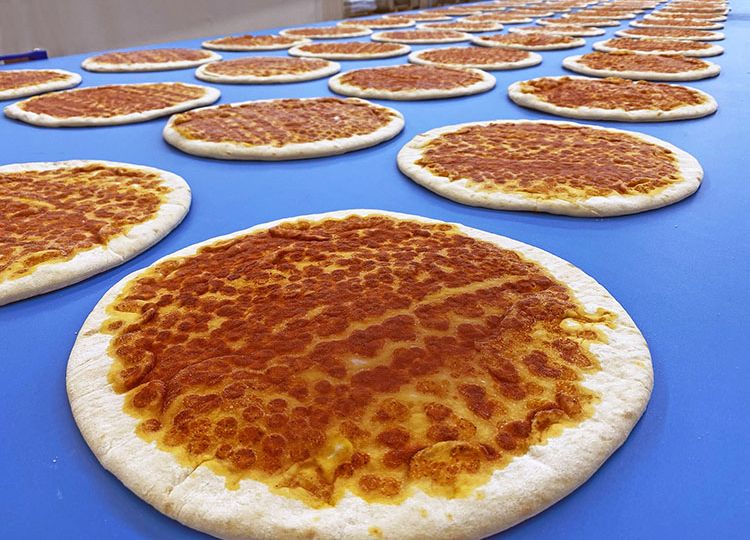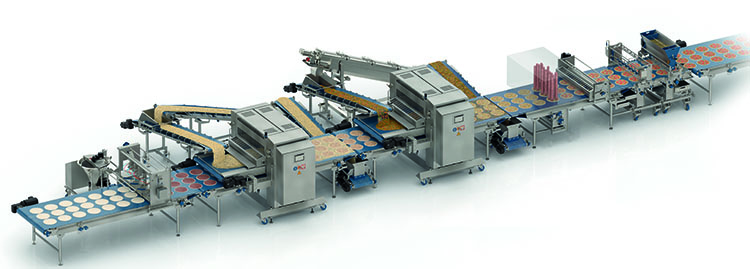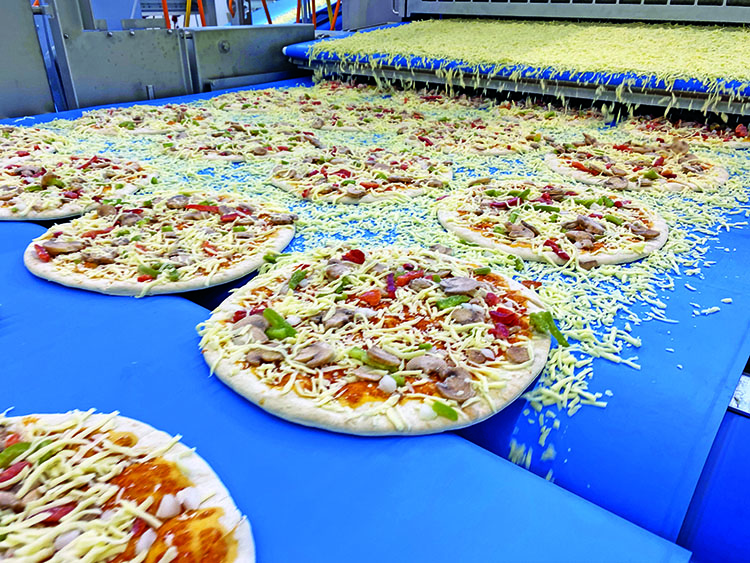
Ever the safe-choice favorite, but never a boring idea: pizza enjoys great diversity, to match all tastes, eating occasions, and curiosity for new taste experiences. A steadily growing appetite for pizza is met with interesting new offerings, including plant-based, premium, and limited-edition launches. Technology meeting these trends is a must for efficient pizza baking.
Pizza launches have seen a 2% growth over the past four years, driven by innovations in dough fermentation techniques and diverse baking methods like stone, wood, and convection ovens.
Europe is home to the most new product launches and reigns in pizza sales worldwide. This is where limited editions, unexpected flavors and premium creations thrive. New products include diverse varieties of cheese, chargrilled vegetables and smoked ingredients, Innova Market Insights research shows. This is not to say pizza’s popularity is dimmed elsewhere: the fastest growth in sales value has been recorded in the Asia-Pacific region for the past two years in a row. Here, new product development favors seafood-topped pizzas, combinations of cheese with vegetables, and mushroom and meat toppings.
Health and flavor rule the product positioning trends. In September this year, Innova ranked the top five positionings in the pizza market worldwide, as follows: no additives or preservatives, vegetarian, traditional, source of protein, and gluten-free. In addition to these, GMO-free, no trans fats, halal and plant-based are other notable claims gaining ground for pizza.
Automated pizza production paves the way
Pizza comes in all shapes and sizes, each with its own recipe, ingredients and process steps, now with more diversity than ever. Automated manufacturing, especially large-scale, is far from easy to capture in one process, Rademkaker explains: “From pan pizza to classic varieties and Neopolitan styles, understanding each process is key to creating the best pizza on the market.” Rademaker helps customers finetune and perfect their recipes and processes at its Test Centre, supporting the wide range in pizza processes. Products can range from thin and crispy pizza to fluffy and airy bases, folded edges, and stuffed crusts, for example.
”We have also upgraded certain dough sheeting units in our production lines so that the dough quality and consistency are improved. We are excited about these new technology features and will be introducing the new equipment at iba 2025.“
Wouter van der Veek, Product Manager, Rademaker
The company has a strategy dedicated to improving its pizza manufacturing equipment. Within this program, “Continuous research and development is carried out toward improving the efficiency and profitability of the Rademaker production lines,” Wouter van der Veek outlines. This includes focusing on the continuous improvement of weighing the products, to help pizza manufacturers reduce the giveaway of expensive topping ingredients.
New developments
Some of the latest R&D efforts focused on the production of the dough sheet: Rademaker brought new improvements to its pre-sheeter, which can now handle very liquid, pre-fermented soft and airy dough batches and transforms them into a consistent dough sheet, the company highlights. The sheeter contributes to the production of premium, artisan-looking pizza and pinsa product ranges. More improvements are on the way, in addition to these developments: “We have also upgraded some of the dough sheeting units in our production lines so that the dough quality and consistency are improved. We are excited about these new technology features and we will introduce the new equipment at iba 2025,” Rademaker anticipates. The equipment going into Rademaker pizza topping systems has also been revised and upgraded, and a new topping line will also be showcased at iba in Dusseldorf, in May next year.
Also new in Rademaker’s pizza solution roster are new techniques to make stuffed crust and folded pizza edges, available through its partnership with Form & Frys Maskinteknik – a Danish company specializing in folding, forming, and filling machinery pastries and baked goods. In 2023, this agreement established Rademaker as the exclusive representative of Form & Frys solutions in several European countries, including Austria, France, Germany, Ireland, Switzerland, and the UK, as well as across the North American continent. “This equipment can be integrated into the Rademaker lines and serve as an alternative solution, building on the existing knowledge Rademaker has of this specific process,” van der Veek explains, adding that “The development of new equipment is a co-operation between our Pizza Product Group, the R&D department and our customers.”
New equipment is designed for integration into new and existing lines, too. Pizza topping equipment for ingredient depositing and cheese application, for example, is easily retrofitted and comes with standalone control systems.

Efficient pizza manufacturing
Resource optimization is always a must-have, regarding energy as well as raw materials – which often come with a high price tag, especially when baking the now-trendy premium and limited edition pizzas. When used as toppings for pizza, cheese and proteins can be particularly expensive ingredients, making up the bulk of the costs for an end product. “Recirculating these ingredients when applying them ensures nothing is lost,” Rademaker highlights. The process prioritizes maintaining the optimal ingredient flow through this loop, with little to no spillage in the first place. High accuracy in depositing ingredients on each pizza makes this possible, as it prevents waste and the over-application of these ingredients, which would result in giveaways.
Moreover, Rademaker’s sheeting lines come with dough recycling systems that return valuable ingredients making up the pizza base back into the mixers or at the front of the line, where they re-enter the dough production process. “Trials at the Rademaker Technology Centre ensure that specific customer recipes are finetuned to support this,” the Product Manager explains how the process is optimized.

Processing efficiency is at the top of the list, but not the only requirement for automated pizza lines. The flexibility to produce diverse specialties is an equally important priority. A latest-generation line can be customized to meet any production plans and specific markets. Rademaker specialists observe: “Daily fresh production has different market requirements than deep-frozen topped pizza for home baking. We think it is important to constantly look at market developments and trends.” Production equipment that can adapt to any number of developments and trends – and do so while maintaining process efficiency and high product quality – is key to making strides and creating tasty pizzas, either fresh or frozen.


